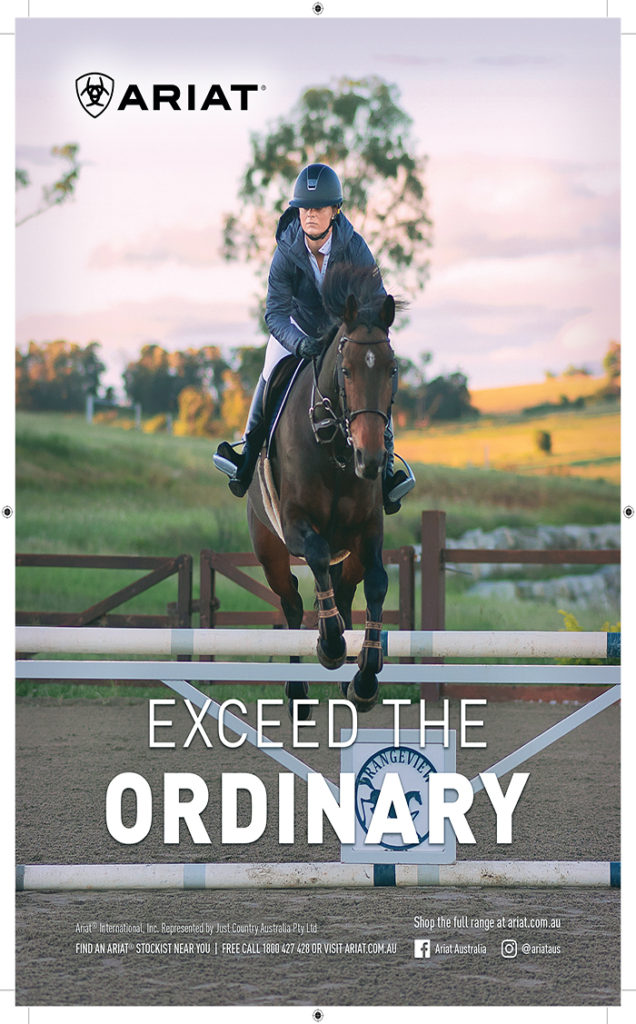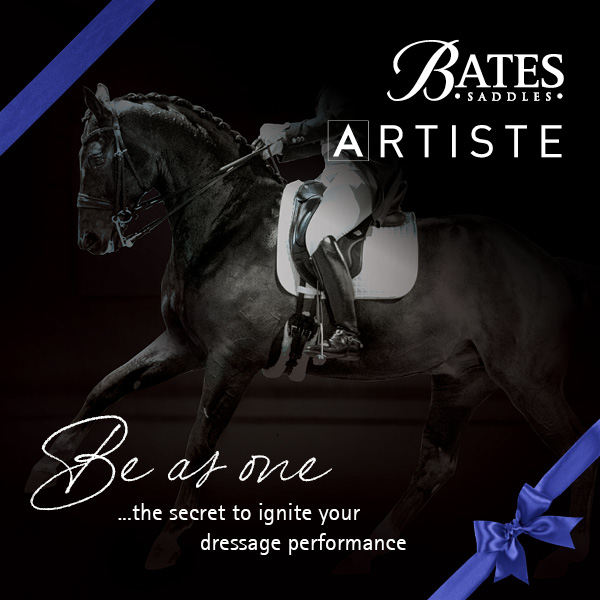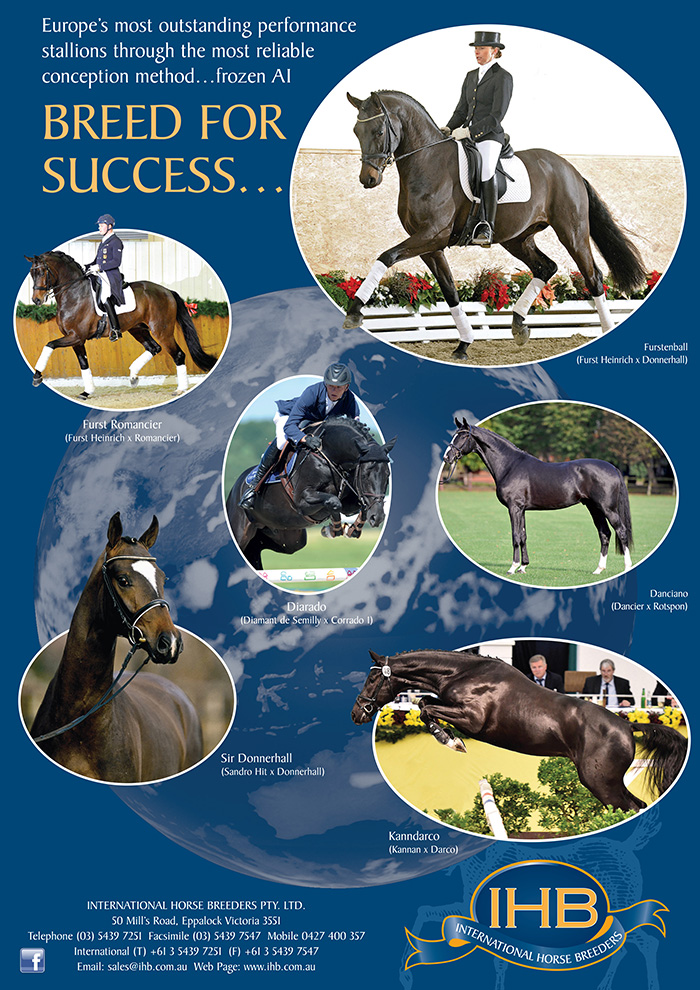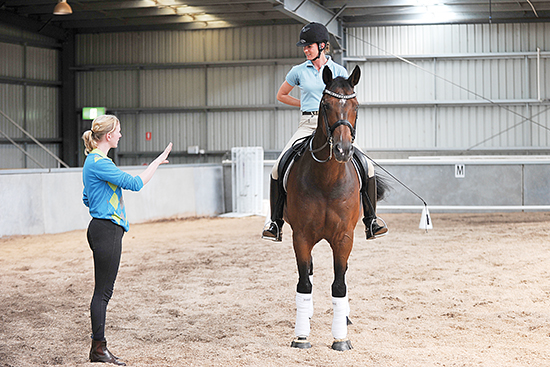 Chris Hector sits in while Princess Nathalie helps Gitte Donvig and Port Said improve their Grand Prix performance, and there’s plenty of wisdom for us all…
Chris Hector sits in while Princess Nathalie helps Gitte Donvig and Port Said improve their Grand Prix performance, and there’s plenty of wisdom for us all…
Photos – Roz Neave
It is always depressing sitting in on clinics, when the same suspects routinely front each-and-every visiting instructor, and each time present the same fundamental problems, and each time, the poor visitor has to explain that really it is a matter of being able to sit in a balanced fashion with independent, tactful and effective aids and get the horse travelling forward and in self-carriage. Oh my, they cry, what a revelation! Why didn’t anyone tell me that before?
And sure enough, the next time you see them, they are bouncing their way into the next lesson from the latest visiting superstar, still strangling the poor horse in front, their legs endlessly nagging behind, flopping around in the saddle as the horse gets more-and-more on it’s forehand and strung out behind. Thank god their poor horses are such generous creatures, and the visitors so tactful…
How wonderful it was then to sit in on a session with Gitte Donvig and Port Said, where Princess Nathalie had a horse and rider combination to play with that was worthy of her talent and experience, suddenly you realised just why Nathalie is consistently in the top five at the world’s toughest dressage competitions – and you see in action dressage education from some of the best Europe has to offer…
As Gitte explained to Nathalie, the horse was already doing Grand Prix with her mother, Mary Hanna, before she took over the ride two years ago. “I’m having fun – he often starts off a bit lazy but then the adrenalin kicks in…”
Straight away, Nathalie is working on refining Gitte’s position, asking Gitte to use her leg aid closer to the girth, and keep her eyes up and looking where she is going, and suggesting that she use leg rather than whip…
“When he doesn’t move off your leg, give him a kick. You are not going to have the whip at the competition. Just close your leg and make sure he is in front of you. Feel that he is active and coming underneath you, a little more activity coming off the ground. Not that he is going 100 miles an hour, but that he is a little quicker…”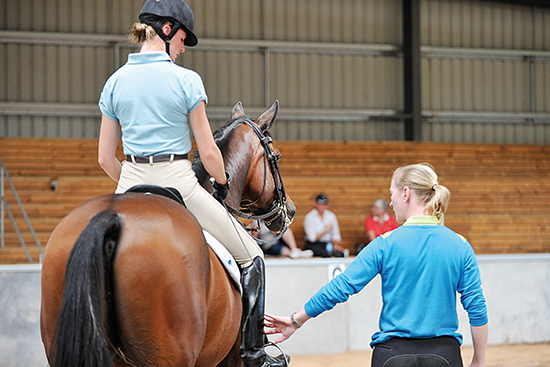
“Use the short side to make sure he is in front of you, make him active on the short side. Use the short side to get him more engaged. Test him on the short side, is he reacting to your leg?”
“You want him light in your hand, but you have to keep him active underneath. Ride from behind and get more expression in the collected trot. He has to search for the connection to your hand – not you searching for him.”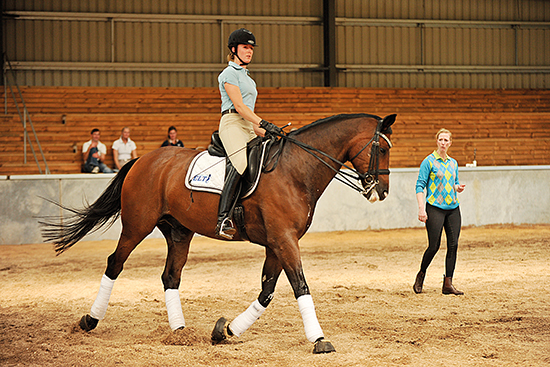
“Without it being passage, think passage so he comes move actively with the hind legs.”
In the half pass, Nathalie wanted Gitte to vary the tempo:
“Look where you are going, collect a little, then ride more forward in the half pass. Forward, then collect, you need to get to the stage where you can play with the tempo in the half pass. Come with your leg, but light when you do, let him go forward.”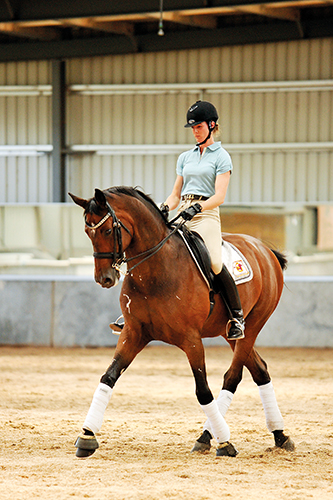
Nathalie was also working on Gitte’s position:
“Look up and relax in your upper body. As soon as you look down, you tense your spine and your upper body. Look up, drop your shoulders and relax your upper body.”
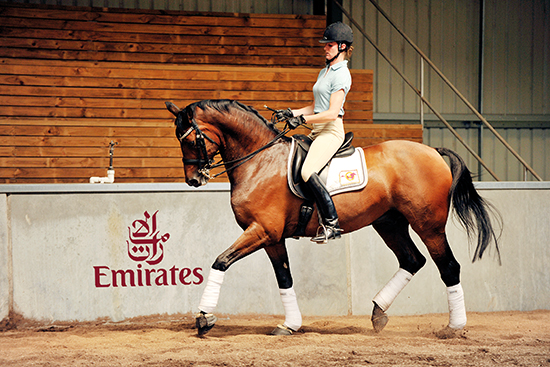
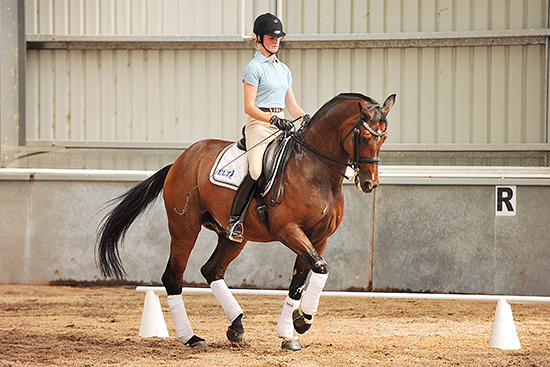
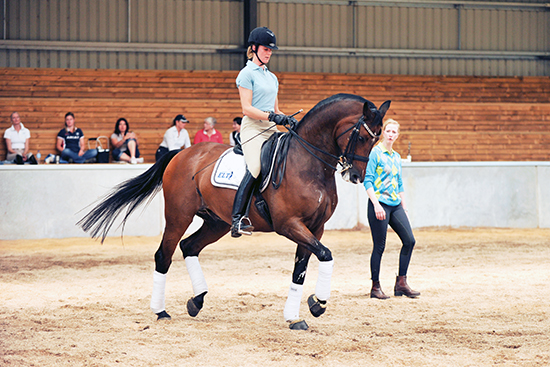 And when the passage started happening, the attention to the rider’s body became more acute:
And when the passage started happening, the attention to the rider’s body became more acute:
“In the passage he is not allowed to push you forward. Sit in the middle of the saddle, and let him bounce you up-and-down. Don’t sit on his hind legs. You need a light playing contact in the passage – if you hold on, he can’t elevate. You should be like a potato, let him bounce you up and down. Don’t use all that energy to sit straight, relax your upper body. The more you bounce, the more elevation you’ll get in the passage. Don’t try to sit still and pretty, relax and bounce…
Is there a problem you would like to work on?
“I haven’t ridden the Special very often and I find the passage to canter transition, difficult…
“How is he in the canter / trot /canter transitions?”
“He get’s hot.”
“My horse Digby can have problems in the passage / canter transition, and how I train it is with canter / trot transitions.”
So off went Gitte and Port in a series of canter / trot transitions, but Nathalie wanted quality transitions…
“More expression in the trot, not passage but more expression and rounder, and then canter.”
 Time to try the passage to canter transition: “Don’t make a fuss about it, just think you are in normal trot and just go into canter. Don’t make it more complicated than it is. In the last two strides of the passage, think slightly longer and then canter.”
Time to try the passage to canter transition: “Don’t make a fuss about it, just think you are in normal trot and just go into canter. Don’t make it more complicated than it is. In the last two strides of the passage, think slightly longer and then canter.”
“That’s it.”
And Gitte was relieved: “It was much better, I’ve had all sorts of weird things when I’ve asked for that transition. I think I inherited the problem, my mother always had difficulties with that transition with Port…”
“The more tense you get in your body in passage, then the more tense he will be – be a potato. If you are stiff, how is he supposed to bounce off the ground in passage? I think the transition problem was more in your head. Digby was like that and I don’t train the passage / canter much, I get it with canter / trot transitions. If you make it a problem at home, it definitely will be a problem at the competition.”
And hopefully at that next competition, Gitte and Port are going to show the benefit of their time spend with the Danish visitor.
Next we talk to Princess Nathalie:
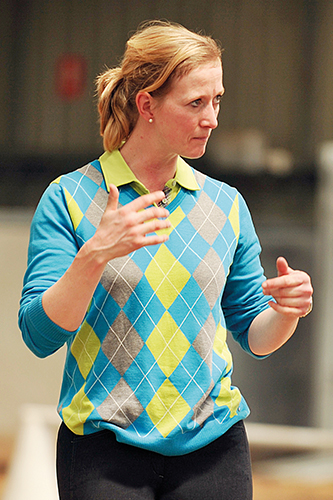 Princess Nathalie – Teaching in Australia
Princess Nathalie – Teaching in Australia
You were telling Gitte, don’t get too elegant, don’t sit too straight…
There is a positive tension in your body to sit straight, and you can over-do it. You can sit straight, but you can still be relaxed, and Gitte wants to sit straight with all her heart, which is not wrong, it just makes a little too much tension – it is a bit over the top, and she then stops the flow going through the horse’s body, through her body, into the hand and then the rein.”
“That’s something that Klaus (Balkenhol) always said, try just to sit like a potato and go da-dum, da-dum, on the horse’s back in the passage. And often it helps. You still have the positive tension of sitting straight but you are not straining with all your heart to sit straight, and then passage, and keep a light contact. You can only keep a light, soft contact and play with the reins, when you are also relaxed in your body.”
Why is it so simple and so hard at the same time?
Nathalie laughs. “If it would be easy, everybody would do it… it also has a lot to do with having control of your body. You have to know which part you can let go of, which part you have to keep on holding, but still being able to sit straight. A lot of it is reading your own body – and that is the most difficult part to explain. There are people who have a lot of feeling with their body, and there are others who don’t really have a lot of feeling for their own body, and those are the ones who make it really difficult to explain how things should feel.”
Are you an instinctive rider or a learned rider?
“There were a lot of things I had to learn, but I had a lot of feeling for horses, or for animals in general. I had to go through a learning process and when I came to Kyra (Kyrklund), there were things that I had learned that were wrong, which she had to un-muddle and show me the right way.”
What would you be doing with Gitte?
“I think she has to learn the feeling of sitting straight but in a positive way, without too much tension in her body. She is a lovely rider, she doesn’t have to use all her strength to keep straight, she can start to relax and get comfortable and go more with the horse.”
And less whip and more leg?
“Especially in piaffe and passage. When I teach horses to do these movements, and also with the older ones, I very seldom have a whip. With the young ones I might have it because you can have three nice steps then they lose it, and just to get over that, I will have a whip with me – but they have to learn to do piaffe / passage without a whip. Once you teach them with the whip, when you take the whip away, they go all flat. They have to know that when you come with the leg, the only reaction, is to react. They have to react to the leg first.”
It’s a tricky transition – the passage to canter transition?
“Horses tend to get tense because passage is the highest level of collection you can get, they get short, and they are really working through their body, and then to get into canter, they have to open up, and some get a little hot then, and they can kick out or get edgy. I think a lot of is in the rider’s mind. If someone goes to the rider and says, if you do a transition to canter from passage BE CAREFUL, of course the rider gets worried and tense. Transition from passage to canter is simple, if you can do it from trot to canter, you can do it from passage to canter. At home I just do trot / canter, and then once in a while, I make the transition from passage… they are not allowed to anticipate, when I get to X, I go into canter because some can come in front of you. I would try to do the transition somewhere else in the arena, but mainly the trot / canter / trot transition has to be easy, light, 100% on the aids, then you can do it out of passage.”
next we talk to Gitte
For more articles with Princess Nathalie, go here:




